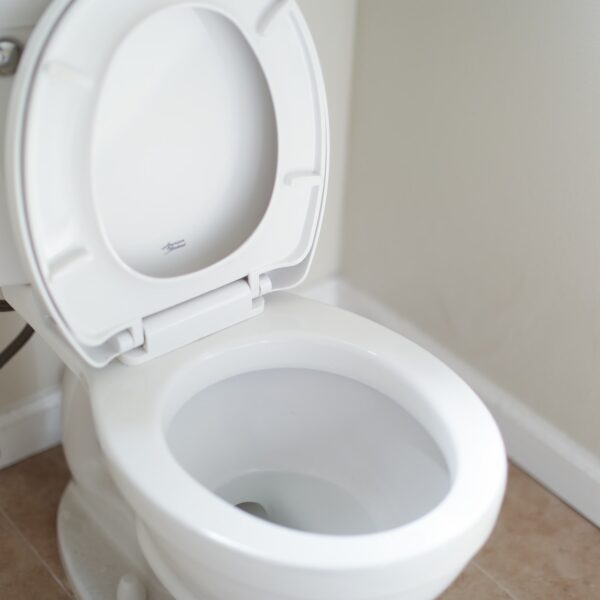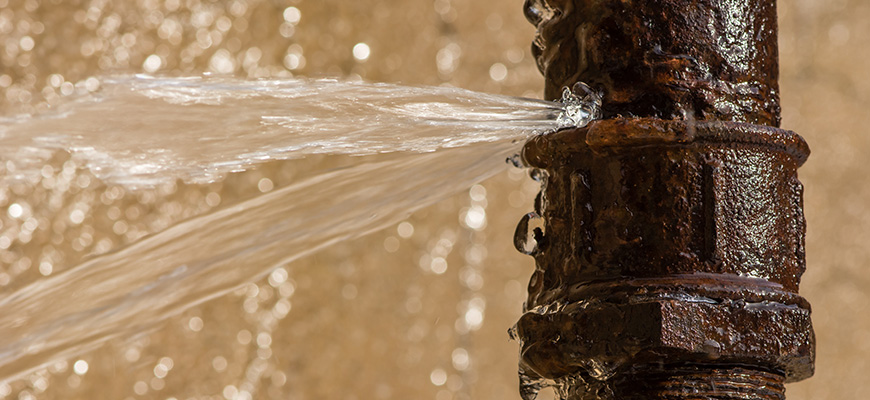Is your toilet constantly running, causing frustration and driving up your water bill? Don’t worry; you’re not alone. Many homeowners experience this common plumbing issue, but understanding the underlying causes can help you solve the problem for good. In this comprehensive guide, we’ll unravel the mystery behind why your toilet is always running and provide you with a step-by-step troubleshooting process to fix it.
Understanding the problem: Why is your toilet always running?
A running toilet can be a nuisance, but it’s essential to understand why it happens before attempting to fix it. The flushing mechanism of a toilet involves several components working in harmony to ensure the proper flow of water. When one or more of these components malfunction, it can result in a toilet that keeps running even after flushing.
The primary cause of a running toilet is a faulty flapper valve. The flapper valve is responsible for controlling the flow of water from the tank to the bowl during a flush. If the flapper valve doesn’t seal properly or is worn out, water will continuously leak into the bowl, leading to a running toilet. Other potential causes include a malfunctioning fill valve, a stuck float, or a damaged overflow tube.
The importance of fixing a running toilet
A running toilet may seem like a minor annoyance, but it can have significant consequences if left unchecked. The continuous flow of water not only wastes a precious resource but also increases your water bill. According to the Environmental Protection Agency (EPA), a running toilet can waste up to 200 gallons of water per day.
Additionally, a running toilet can indicate an underlying plumbing issue that may lead to more significant problems if not addressed promptly. The constant flow of water can put strain on your plumbing system and potentially cause leaks or water damage. Fixing a running toilet is not only a matter of convenience but also a way to protect your home and save money in the long run.
Common causes of a running toilet
To effectively troubleshoot and fix a running toilet, it’s crucial to identify the specific cause of the problem. Here are some common culprits behind a toilet that won’t stop running:
- Faulty flapper valve: As mentioned earlier, a faulty flapper valve is the most common cause of a running toilet. If the flapper valve doesn’t create a tight seal, water will continue to leak from the tank into the bowl.
- Malfunctioning fill valve: The fill valve controls the flow of water into the tank after a flush. If the fill valve fails to shut off properly, water will continuously flow into the tank, causing the toilet to run.
- Stuck float: The float is responsible for regulating the water level in the tank. If the float gets stuck in the “up” position, it will prevent the fill valve from shutting off, resulting in a running toilet.
- Damaged overflow tube: The overflow tube prevents the tank from overflowing by diverting excess water into the bowl. If the overflow tube is damaged or improperly installed, water may continuously flow into the tube and cause the toilet to run.
How to diagnose a running toilet
Diagnosing a running toilet involves a systematic approach to identify the specific cause of the problem. Follow these steps to pinpoint the issue:
- Remove the tank lid and observe the flushing process: Watch the components inside the tank as you flush the toilet. Observe if the flapper valve closes completely after the flush or if the fill valve continues to let water in.
- Check the flapper valve: Inspect the flapper valve for signs of wear and tear. Look for any cracks or discoloration that may indicate a faulty seal. Ensure that the flapper valve is properly aligned and doesn’t get stuck on anything when closing.
- Test the fill valve: Gently lift the float arm to see if the water flow stops. If the water continues to flow, the fill valve may be malfunctioning and need to be replaced.
- Examine the float: Ensure that the float moves freely and isn’t obstructed. If the float is stuck in the “up” position, try adjusting it or replacing it if necessary.
- Check the overflow tube: Inspect the overflow tube for any damage or misalignment. Make sure it is connected properly and not overflowing water into the tube.
By carefully examining these components and their interactions, you can determine the source of the problem and proceed with the necessary repairs.
Step-by-step guide to fixing a running toilet
Now that you’ve diagnosed the issue, it’s time to fix your running toilet. Follow these step-by-step instructions to resolve the problem:
- Turn off the water supply: Locate the shut-off valve behind the toilet and turn it clockwise to shut off the water supply. Flush the toilet to empty the tank.
- Replace the flapper valve: Remove the old flapper valve by detaching it from the chain. Install a new flapper valve by attaching it to the chain and ensuring it forms a tight seal when closed.
- Adjust or replace the fill valve: If the fill valve is malfunctioning, you may need to adjust or replace it. Follow the manufacturer’s instructions for your specific fill valve model.
- Fix the float: If the float is stuck in the “up” position, try adjusting it or replacing it if necessary. Ensure that it moves freely and doesn’t obstruct the fill valve.
- Inspect and adjust the overflow tube: Check the overflow tube for any damage or misalignment. Make sure it is connected properly and not overflowing water into the tube.
- Turn on the water supply: Once you’ve completed the repairs, turn the water supply back on by turning the shut-off valve counterclockwise. Allow the tank to refill and perform a test flush to ensure the running issue is resolved.
Tools and materials needed for fixing a running toilet
To successfully fix a running toilet, you’ll need a few essential tools and materials. Here’s a list of what you’ll require:
- Adjustable wrench: For loosening and tightening nuts and bolts.
- Screwdriver: To remove and install components inside the tank.
- Replacement parts: Depending on the specific issue, you may need to purchase a new flapper valve, fill valve, float, or overflow tube.
- Rubber gloves: To protect your hands during the repair process.
- Towels or rags: To clean up any water spills or leaks.
It’s essential to gather these tools and materials before attempting to fix your running toilet to ensure a smooth and efficient repair process.
Troubleshooting tips for persistent running toilets
If your toilet continues to run even after following the above steps, there may be underlying issues that require further troubleshooting. Here are some additional tips to help you solve persistent running toilet problems:
- Check for mineral deposits: Mineral deposits can accumulate on the flapper valve or other components, preventing a proper seal. Clean any deposits using a mild cleaning solution or vinegar.
- Inspect the chain length: If the chain connecting the flapper valve and the flush handle is too short or too long, it may interfere with the proper functioning of the flapper valve. Adjust the chain length as necessary.
- Test the water pressure: Excessively high water pressure can cause a running toilet. Use a pressure gauge to measure the water pressure and adjust it if necessary.
- Look for leaks: Inspect the toilet base and connections for any signs of leaks. A leaky seal or damaged plumbing can contribute to a running toilet. Address any leaks promptly.
When to call a professional plumber
While most running toilet issues can be resolved with DIY troubleshooting and repairs, there are instances where it’s best to call a professional plumber. Consider contacting a plumber if:
- You’re unsure about the diagnosis or repair process.
- The problem persists despite your best efforts.
- The running toilet is accompanied by other plumbing issues, such as leaks or clogs.
- You’re uncomfortable working with plumbing fixtures and prefer to leave it to the experts.
A professional plumber can provide expert advice, identify underlying issues, and ensure a proper and long-lasting fix for your running toilet.
Preventing future running toilet issues
Once you’ve successfully fixed your running toilet, it’s essential to take preventive measures to avoid future problems. Here are some tips to keep your toilet running smoothly:
- Regularly inspect and clean the flapper valve: Check the flapper valve for any signs of wear or deposits. Clean it regularly to maintain a tight seal.
- Test the fill valve periodically: Lift the float arm to ensure the water flow stops and the fill valve shuts off properly. If you notice any issues, address them promptly.
- Avoid flushing non-flushable items: Only flush toilet paper and human waste down the toilet. Flushing non-flushable items can cause clogs and damage the flushing mechanism.
- Maintain a healthy water pressure: Excessively high water pressure can strain your plumbing system and cause running toilets. Use a pressure regulator to keep the water pressure within a safe range.
By following these preventative measures, you can minimize the chances of experiencing a running toilet in the future and prolong the lifespan of your plumbing system.
Conclusion
A running toilet can be a frustrating and costly problem, but with the knowledge and troubleshooting techniques outlined in this comprehensive guide, you can tackle the issue head-on. By understanding the different components of a toilet, diagnosing the specific cause of the problem, and following the step-by-step repair process, you’ll be able to fix your running toilet and regain peace and quiet in your bathroom.
Remember, a running toilet is not just an inconvenience; it’s a waste of water and potentially a sign of underlying plumbing issues. By taking the time to address the problem promptly and effectively, you can save water, money, and protect your home from further damage. So, roll up your sleeves, gather your tools, and get ready to say goodbye to that incessant running sound once and for all!


